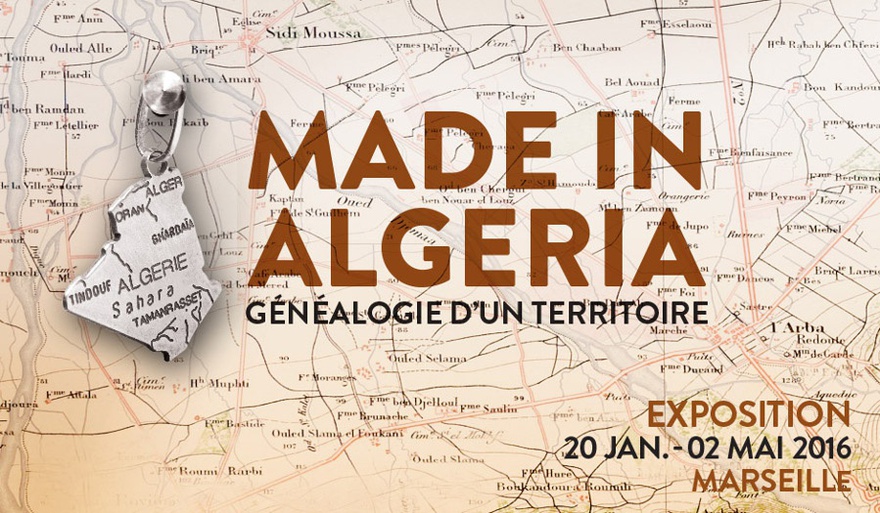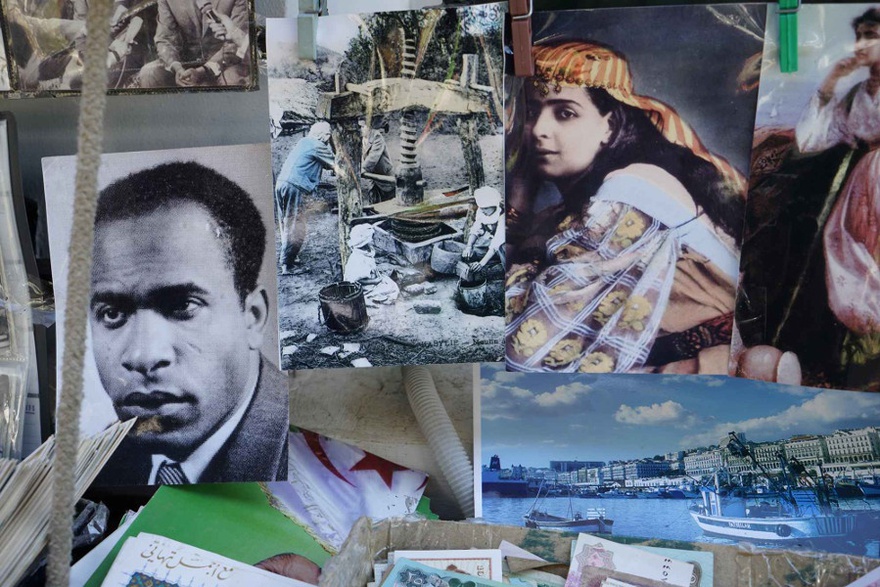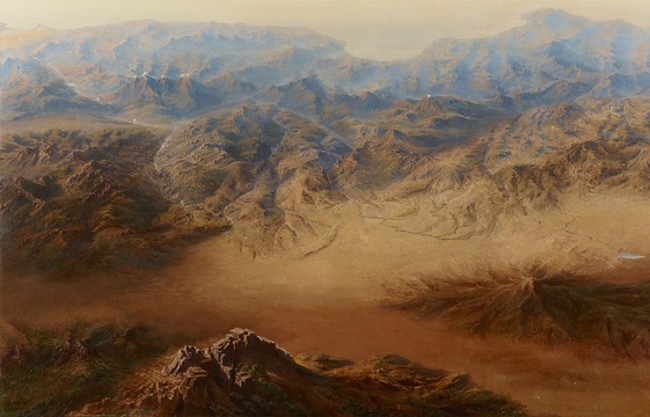Reviews
Made in Algeria
Genealogy of a Territory at MuCEM, Marseille
Made in Algeria takes place at the Museum for Europe and Mediterranean Civilizations (MuCEM), which opened in 2013 when Marseille was European Capital of Culture. The show consists of approximately 200 artworks and documents have been brought together by two curators Zahia Rahmani, art historian and novelist, Head of the Art and Globalization programme at the Institut National d'Histoire de l'Art (INHA) in Paris, and Jean-Yves Sarazin, Head of the Department of Maps and Plans at the Bibliothèque nationale de France also in Paris. It is based on years of academic research, impressive sharing of resources and data, and a series of seminars.
The core project presents a broad range of maps and plans – manuscripts, engravings and modern prints – of Algeria and North Africa dating from the sixteenth century until the second half of the twentieth century, which allows for a progressive decoding of the subjectivities of cartographers and the questioning of the revealed or proposed 'realities' of the land. Generally, these cartographers were spies, soldiers, archaeologists or scientists, draughtsmen are outsiders – primarily English, Spanish, German, Italian and French – with very particular aims to explore and conquer these territories. Early Ottoman records were noticeably absent: they seem to have disappeared in the destruction or disrepair of the archives in Algeria, which poses a prominent problem today. (As a consequence, most of the loans in the exhibit come from French museums and archives.)
Split in four chronological sections, the exhibition begins with surveillance from the sea, as maritime traders, pirates and European leaders attempt to grasp the coastline in order to prepare it for invasion. As the landscape is carefully dissected and registered, the variety of orientations is dizzying, since the Mediterranean is alternatively depicted at the top, bottom or side of the page. Through these studies, the visitor is able to observe the rather chilling propaganda machine at work. From 1830, Algeria became French for some 130 years, and the colonization programme appears in all its assimilatory stages. The ruling administration progressively transformed and frenchified the names of places and streets – thus Annaba temporarily became Bône; Skikda was Philippeville; French departments were created to compartmentalise the country. During the 2nd Republic, when the city of Paris was deemed insalubrious, a poster was issued in 1848 calling workers to go and colonize Algeria. Land ownership was then massively appropriated and transferred – leaving a large part of the Muslim peoples dispossessed.
Fine artists are seen as complementing the construction of Algerian imagery. They accompanied the expeditions from the outset of colonization to sketch and paint the great battles and penetration campaigns. Veering between classicism, romanticism and orientalism, Jean-Antoine-Siméon Fort received commissions from the King Louis-Philippe himself in the 1840s to depict the glory of the Army of Africa and a selection of these, often vast, canvases have exceptionally been borrowed from the Châteaux de Versaille. These, and Horace Vernet's work for example, are in fact equally detailed chronicles of the times prior to the conquest. Pioneering Algerian photographers are also included as the process of self-representation begins just prior to or after the independence in 1962. Mohammed Dib, mostly renowned as a radical writer, photographed his home town of Tlemcen, and Mohamed Kouaci was involved in the fight for liberation and the first decades of the Algerian Government working for the Ministry of Information.
Contemporary works are peppered throughout the exhibition as counterpoints and quasi antidotes to the messages being conveyed through the documents amassed. To cite just a few examples, Zineb Sedira goes in search of her father's land and its history in the Aurès region for her new film Les Terres de mon père (2015). Following a drawn red line, a film 'recce', or reconnaissance, has never been so charged with uncomfortable meaning in this context. An earlier work of Sedira's dating to 2005, And the Road Goes on..., follows the coastline road between Algiers and Tipaza in stops and starts, which was infamously dangerous during the dark years of terrorism in the 1990s and early 2000s. Continuing her research on public pop-up services, Katia Kameli presents a video chronicling the importance of a very well-known mobile kiosk selling selected photographs and postcards of the nation's history in the centre of Algiers, with a series of interviews providing different contexts to consider the phenomenon. An artist based in Marseille, Dalila Mahdjoub revisits earlier work from the mid 1990s, merging archival footage of a popular French TV programme that regularly reported on the situation in the banlieues and the destruction of the tower block where she had grown up and where many Peugeot factory immigrant workers lived in the East of France. Jason Oddy's pristine photographs of Oscar Niemeyer's Algerian constructions, titled Concrete Spring (2014), point to time and utopias passing.
The exhibition is provocatively titled in the original English: a deliberate distancing from the stronghold of the French language on Algerian communications and culture. Made in Algeria summarizes the systematic trademarking of Algeria that was applied during French rule while also hinting at the new looming possible forms of global capitalist exploitation.
Made in Algeria is on show at MuCEM from 20 January–2 May, 2016. For more information, follow this link to the Made in Algeria website.








